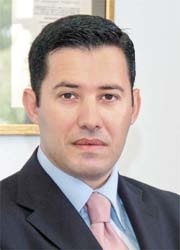Financing methods
The pros and cons.
Over the last 50 years healthcare delivery has changed dramatically. New epidemics, aging populations, patients' expectations, mobilisation of populations, the globalisation and dissemination of information, all demand new patterns of healthcare delivery.

Dr Maniadakis has overall responsibility for the organisation and operation of the 800-bed hospital - one of the largest healthcare facilities in Greece. It includes the University of Crete Medical School, has 2,500 employees, a 200 million annual budget, spans over a buildings complex totalling 115,000m2, and serves 400,000 patients annually. He is also responsible for the development and implementation of its business plan. His scholarships and experience are as considerable as his educational pursuits, which continue: his credits include the Certificate in Advanced Methods of Economic Modelling Analyses [2000], from Oxford University, Oxford, Britain. He has also authored many publications, and lectures in Greece and Britain, where he is a member of the Royal Economic Society of England. Other memberships: Operational Research Society, Productivity Analysis Research Network, International Health Economists Association, International Society for Pharmaceutical Outcomes Research, International Society of Technology Assessment in Health Care.
Above all the technological revolution is raising healthcare costs in an exponential manner.
These changes put challenges before healthcare managers in terms of how to plan and fund new investments. Private money and equity has been the traditional approach. It is easy to implement projects if you have money, which is not often the case. Leasing represent a good alternative option, especially for medical equipment, because it spreads cost over years and makes it possible to follow technological advances.
Recently, private/public partnership has been used by the public sector to develop large investments, with initial funding from the private sector. This option has advantages: the cost is spread over years and usually private firms are better at delivering projects on time and on cost compared to the pubic sector. Donations can be a large source of income and there are prominent institutions that annually receive large amounts of money, but it is not a viable solution for the great majority of hospitals. Overall, different methods of funding have advantages and disadvantages and they are more suitable for certain types of projects. It is important when implementing healthcare projects to obtain other views, apart from the financial one. In many cases it is useful to consider the cost-benefit of new projects not just in money terms, but to consider also the life years gained for every Euro spent in new investments.
01.03.2006





